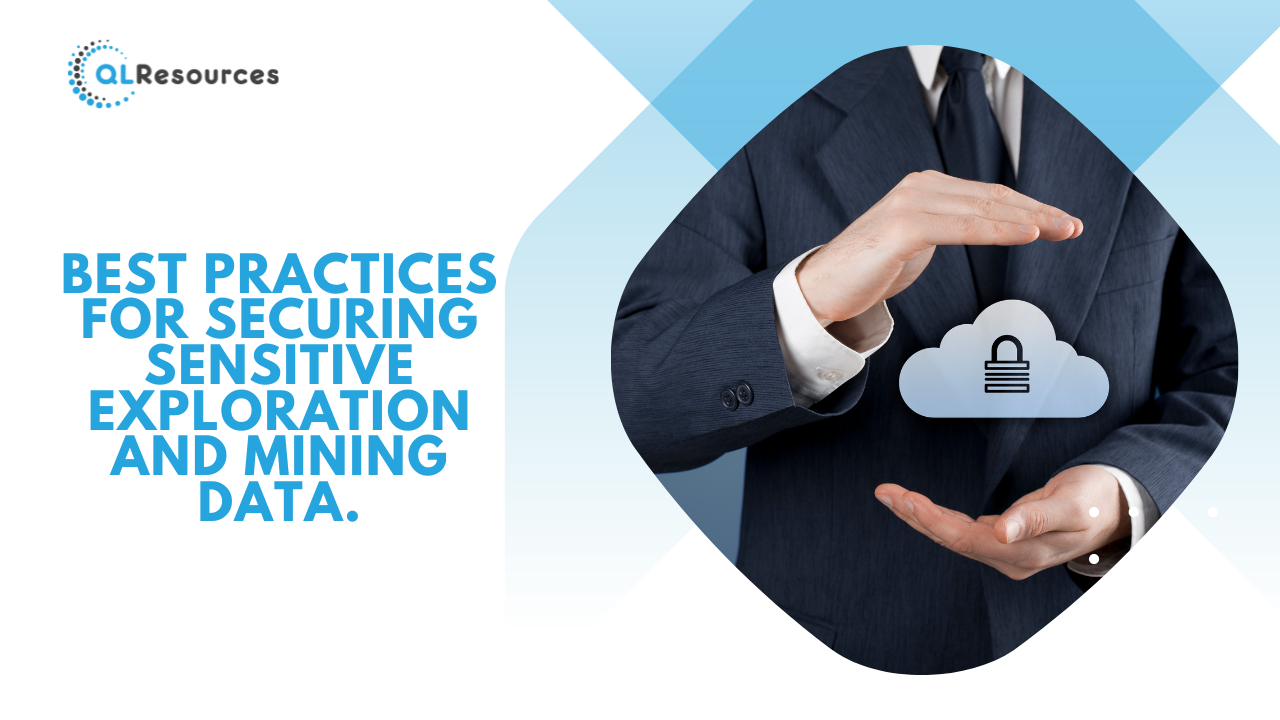
Securing sensitive exploration and mining data is crucial to safeguarding intellectual property, complying with regulations, and protecting against potential cyber threats. Here are some best practices for ensuring the security of sensitive data in the exploration and mining industry:
1. Data Encryption:
Utilise robust encryption methods to protect data during transmission and storage. Implement end-to-end encryption for communications, and encrypt sensitive files and databases using strong algorithms.
2. Access Control:
Implement strict access controls to limit access to sensitive data. Use role-based access permissions to ensure that only authorised personnel have access to specific datasets and systems.
3. User Authentication:
Enforce strong user authentication mechanisms, such as multi-factor authentication (MFA), to verify the identity of individuals accessing sensitive data. This adds an extra layer of security beyond traditional username and password credentials.
4. Secure Data Storage:
Store sensitive data in secure, access-controlled environments. Consider utilising secure cloud storage solutions with robust encryption and access controls. Regularly audit and monitor access to stored data.
5. Regular Data Backups:
Implement a comprehensive and regular data backup strategy. In the event of data loss or a security incident, having up-to-date backups ensures that critical information can be restored without significant disruption.
6. Network Security:
Implement strong network security measures, including firewalls, intrusion detection/prevention systems, and virtual private networks (VPNs). Regularly update and patch network infrastructure to address vulnerabilities.
7. Secure Development Practices:
Follow secure coding practices when developing software applications for data management. Conduct regular security assessments, code reviews, and testing to identify and address potential vulnerabilities.
8. Employee Training:
Train employees on security best practices and raise awareness about potential threats such as phishing attacks. Establish clear guidelines for handling sensitive information and regularly update staff on security protocols.
9. Vendor Security Assessment:
Before partnering with third-party vendors or utilising external services, conduct thorough security assessments. Ensure that vendors adhere to industry security standards and comply with your organisation’s data protection requirements.
10. Incident Response Plan:
Develop and regularly update an incident response plan to address potential security breaches. This plan should include steps for identifying, containing, eradicating, recovering, and learning from security incidents.
11. Compliance with Regulations:
Stay informed about and comply with relevant data protection regulations and industry standards. This may include regulations such as GDPR, HIPAA, or specific regulations applicable to the mining and exploration sector.
12. Physical Security:
Implement physical security measures to protect physical infrastructure and storage locations containing sensitive data. This includes restricting access to server rooms, utilising surveillance systems, and implementing secure facility access controls.
13. Regular Security Audits:
Conduct regular security audits and assessments to identify vulnerabilities and weaknesses in the security infrastructure. Address any identified issues promptly to maintain a robust security posture.
14. Data Masking and Anonymisation:
Mask or anonymise sensitive data when it is not required for specific tasks. This minimises the risk of unintentional exposure and helps protect the privacy of individuals associated with the data.
15. Continuous Monitoring:
Implement continuous monitoring tools and practices to detect anomalous activities and potential security threats in real-time. Timely detection allows for prompt response and mitigation.
By adopting these best practices, exploration and mining companies can establish a robust security framework to protect their sensitive data from unauthorised access, data breaches, and other cybersecurity risks. Regularly updating and refining security measures is essential to adapt to evolving threats and ensure the ongoing integrity of sensitive information.